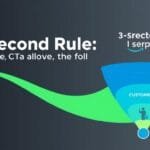What if everything you know about search engine strategies could become outdated in mere months? As algorithms grow smarter, businesses clinging to manual methods risk falling behind. Artificial intelligence isn’t just reshaping digital marketing – it’s rewriting the rules entirely.
Modern SEO now relies on machine learning to analyse user behaviour, predict trends, and adapt content at lightning speed. Nearly a third of marketers already use these tools for content creation, according to recent data. The shift isn’t optional – it’s essential for staying visible in crowded markets like India’s rapidly evolving digital landscape.
This guide explores how AI-driven approaches outperform traditional tactics. We’ll break down how algorithms process vast data sets to uncover hidden patterns, from competitor gaps to emerging search preferences. Discover why understanding these advantages and disadvantages of SEO adaptations separates industry leaders from those left scrambling.
Ready to future-proof your strategy? Let’s decode the tools redefining visibility in 2025.
Understanding the Role of AI in Search Engine Optimisation

The digital marketing landscape now operates at machine speed, with artificial intelligence reshaping how businesses approach visibility. Unlike traditional methods, modern strategies analyse patterns in user behaviour and content performance through self-improving systems.
What Is Artificial Intelligence in SEO?
Artificial intelligence mimics human decision-making through algorithms that process data faster than any team could. These systems spot trends in search engine queries, competitor gaps, and regional preferences – particularly useful in India’s diverse digital markets. By automating tasks like keyword clustering, they free marketers to focus on creative strategy.
The Impact on Modern Search Engines
Platforms like Google now rely on machine learning models such as BERT to interpret conversational queries. This shift means content must align with user intent, not just keywords. For instance, tools using natural language processing help draft meta descriptions that match how people actually phrase searches.
Businesses leveraging these AI-driven marketing platforms gain real-time insights into algorithm updates. They adapt faster to changes in ranking factors, from mobile-first indexing to voice search preferences. The result? Content that stays relevant as search engines evolve.
The Evolution of AI-Driven SEO Practices

The journey from manual keyword stuffing to intelligent content curation marks a pivotal shift in digital marketing strategies. Early tools focused on repetitive tasks like tracking rankings. Today’s systems analyse user behaviour patterns, adapting content dynamically to match evolving preferences.
Key Milestones in AI and SEO
Google’s 2015 launch of RankBrain revolutionised how algorithms interpret ambiguous queries. BERT’s introduction in 2019 improved understanding of conversational phrases, particularly useful for India’s multilingual audiences. Recent updates now generate AI-generated summaries directly in results, prioritising relevance over rigid keyword matches.
Current Trends in AI Application
Voice assistants and visual lookup tools dominate modern industry trends. Over 40% of Indian users prefer voice searches, demanding content that answers natural-language questions. Machine learning also powers personalised recommendations, adjusting website elements based on individual browsing histories.
As search engines deploy smarter algorithms, marketers require tools that predict shifts in ranking factors. This technological arms race pushes businesses to adopt adaptive strategies or risk invisibility in crowded markets.
Why AI is Essential in Today’s SEO Landscape

Imagine cutting your website audit time from days to minutes while uncovering hidden opportunities. Modern strategies demand tools that adapt as quickly as user preferences shift. For Indian companies, this isn’t about keeping up – it’s about leading.
Benefits for Businesses and Marketers
Automation handles repetitive tasks like crawling for broken links or tracking rankings. Teams regain hours weekly, redirecting energy towards campaigns that drive conversions. One Mumbai-based agency reported 68% faster content updates after adopting these systems.
Machine learning processes data at scales impossible manually. It spots patterns in business rivals’ strategies or regional trends across India’s 22 official languages. These insights inform decisions that boost organic visibility.
Scalability matters most for smaller firms. Cloud-based platforms offer enterprise-level capabilities without massive budgets. A Jaipur startup used landing page tools enhanced by intelligent systems to triple their lead generation in 90 days.
Results speak clearly: brands using these technologies see 40-60% higher traffic retention and improved performance metrics. They gain a competitive edge by adapting to changes in real time. In 2025, this advantage defines market leaders.
Leveraging Natural Language Processing and Machine Learning

Modern SEO demands a shift from guessing intent to decoding it with precision. Tools using natural language processing now analyse how people phrase questions, uncovering patterns human researchers might miss. This approach proves vital in India’s multilingual markets, where dialects and colloquialisms shape search behaviour.
Optimising Keyword Research with NLP
Language processing algorithms excel at spotting phrases users actually type, not just generic terms. For instance, a Delhi-based e-commerce brand discovered “affordable cotton kurta designs under ₹500” through machine learning – a query with 60% less competition than broader alternatives. These systems prioritise context over volume, revealing terms that drive qualified traffic.
Enhancing Content and User Intent Analysis
Advanced tools map semantic connections between keywords and related concepts. When crafting guides on monsoon skincare, a Mumbai blogger’s AI tool suggested adding “humidity-proof makeup tips” – a subtopic competitors overlooked. This depth addresses user needs comprehensively, boosting dwell time and authority signals.
Machine learning also identifies content gaps by comparing your pages with top-ranking rivals. One Bengaluru tech firm found 37% of their blog posts lacked FAQs addressing regional installation challenges. Updating these sections increased their organic visibility by 22% in three months.
Implementing AI-Powered Search Optimization Strategies

Transforming your approach requires more than just adopting new tools – it demands strategic alignment. Begin by auditing your current workflows to identify bottlenecks like slow content updates or manual data analysis. Teams in Chennai and Pune have successfully used this method to prioritise high-impact areas.
- Data preparation: Clean historical analytics and competitor benchmarks
- Tool selection: Choose platforms compatible with your CMS
- Phased rollout: Start with keyword clustering before tackling dynamic content
- Performance tracking: Monitor metrics like organic share-of-voice weekly
Successful implementation hinges on team training. A Kochi-based agency reduced errors by 45% through workshops on interpreting AI-generated insights. Focus on practical skills like adjusting strategies based on real-time traffic predictions.
Measure ROI using three core indicators: time saved on repetitive tasks, improvement in keyword rankings, and growth in qualified leads. One Delhi e-commerce brand achieved 80% faster decision-making after integrating these systems.
Common challenges include resistance from traditional teams and API limitations. Address these through pilot projects demonstrating quick wins – like automating meta description generation – to build stakeholder confidence.
Enhancing Website Performance with Advanced AI Tools

Choosing the right technology stack separates industry leaders from those stuck in manual processes. Modern solutions analyse website health, content gaps, and technical infrastructure at scale – crucial for Indian businesses managing multilingual platforms.
Tool Reviews and Comparative Insights
Leading platforms offer distinct capabilities:
- HubSpot’s suite (bundle pricing) excels in content generation with built-in SEO suggestions
- AlliAI (£136/month) automates bulk page edits across large e-commerce sites
- RankIQ (£80/month) specialises in blog-focused strategies for smaller teams
Budget-conscious creators might prefer multi-platform tools like Jasper or INK (£31/month). These handle basic audits while integrating with social media workflows.
Automating Technical Audits and Site Crawls
Advanced automation now scans millions of URLs for:
- Broken links affecting performance
- Mobile compatibility issues
- Server response delays
SE Ranking (£42/month) provides real-time alerts for critical errors. A Mumbai-based agency reduced crawl budget waste by 73% using its prioritisation features. This lets teams focus on strategic improvements rather than manual checks.
When selecting tools, consider your team’s size and existing CMS compatibility. Most platforms offer free trials – test how they handle India’s diverse hosting environments before committing.
AI for Content Creation and Optimisation

Ever wondered how top brands maintain fresh, engaging web pages while you struggle with writer’s block? Modern content teams now blend artificial intelligence with human expertise to craft materials that resonate. These systems handle heavy lifting like research and structure, letting creators focus on storytelling.
Automated Content Generation Techniques
Leading platforms analyse top-performing articles to suggest frameworks that work. For example:
- Jasper adapts brand voice across blogs and product descriptions
- INK clusters related keywords for niche-specific optimisation
- HubSpot’s AI writer expands outlines into full posts with SEO headers
A Bengaluru agency used these tools to cut drafting time by 58% while maintaining quality. As one editor notes: “The AI proposes angles we’d never consider, but our team adds local flavour.”
Using AI for Drafting and Paraphrasing
Intelligent systems excel at refreshing existing materials. They can:
- Repurpose webinar transcripts into social media snippets
- Update statistics in old guides automatically
- Adjust tone for different regions across India
Mumbai-based teams using CMS platforms with built-in AI report 40% faster content cycles. However, human editors remain crucial for checking cultural relevance and narrative flow.
Balance is key. Let machines handle repetitive tasks, but keep creative control. Tools suggest – people decide.
Optimising On-Page Elements with AI Assistance

Your website’s hidden potential lies in elements most teams overlook. Intelligent systems now refine technical components that directly impact visibility and user experience. From image tags to loading speeds, these adjustments separate stagnant sites from high performers.
Metadata, Alt Text, and Structured Data
Dynamic metadata generation adapts titles and descriptions to real-time trends. A Delhi-based travel agency saw 33% more clicks after using AI to match meta tags with monsoon holiday searches. These systems analyse user engagement patterns to prioritise phrases that convert.
For images, algorithms suggest alt text balancing accessibility with keyword relevance. A Mumbai fashion retailer increased image search traffic by 41% using descriptive tags like “hand-block printed cotton saree ₹899”. Tools also automate structured data markup for:
- Product price updates
- Event date changes
- Local business operating hours
Page speed optimisation becomes proactive with AI monitoring. Systems flag elements slowing your site, from uncompressed images to render-blocking code. A Bengaluru SaaS company reduced bounce rates by 27% after implementing these recommendations.
Internal linking strategies now use engagement data to guide visitors. AI maps content relationships, suggesting contextual anchors that boost dwell time. For webinar hosts, integrating these insights with platforms like interactive presentation tools creates seamless user journeys.
Results emerge faster when machines handle technical precision. One Kochi-based blog tripled organic traffic in six months through automated header restructuring and mobile-first adjustments. The key? Letting AI enhance human strategy, not replace it.
Boosting Link Building and Competitor Analysis with AI
Building quality connections in India’s crowded digital space requires smarter tactics than manual outreach. Intelligent systems now map hidden relationships between websites, identifying partnerships that deliver real impact. This shift transforms how brands earn authority and outmanoeuvre rivals.
Identifying High-Value Backlink Opportunities
Advanced algorithms assess millions of sites using three criteria: relevance to your niche, domain authority scores, and historical user behaviour. For example, a Pune-based health brand discovered niche blogs through AI analysis – resulting in 29% more referral traffic from trusted sources.
These tools compare your competitors’ backlink profiles with yours, spotlighting gaps. One Delhi agency found 63% of rival links came from affiliate platforms offering digital products. Adjusting their strategies accordingly boosted domain ratings by 18 points.
Machine learning also predicts outreach success rates. It analyses factors like site responsiveness and content alignment to prioritise opportunities. Teams using these insights report 50% faster deal closures, focusing efforts where results matter most.











